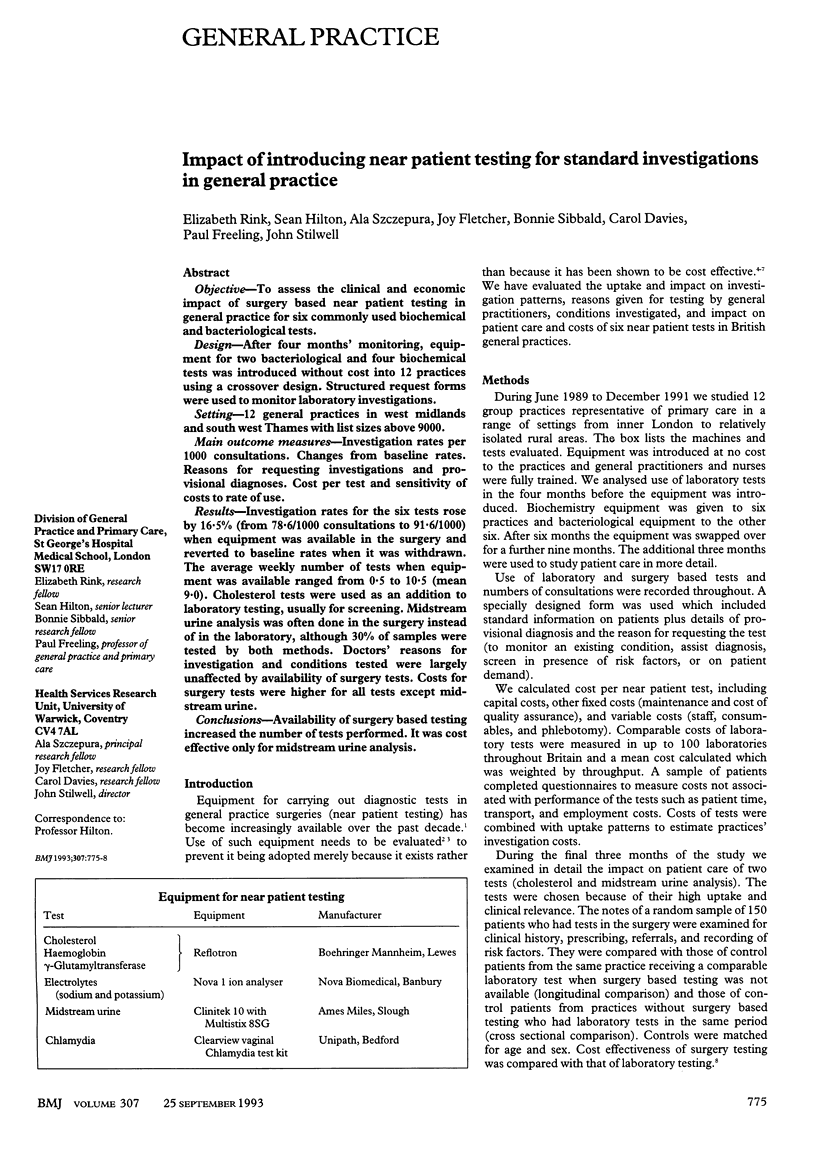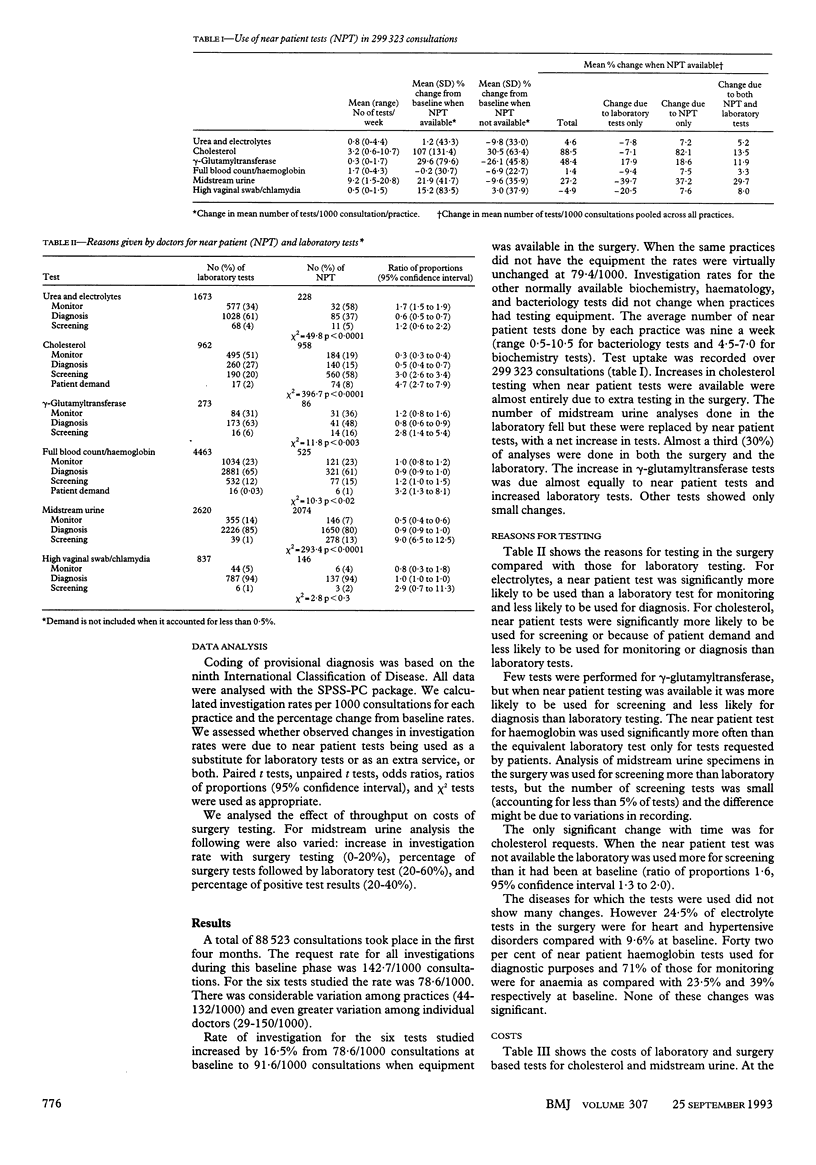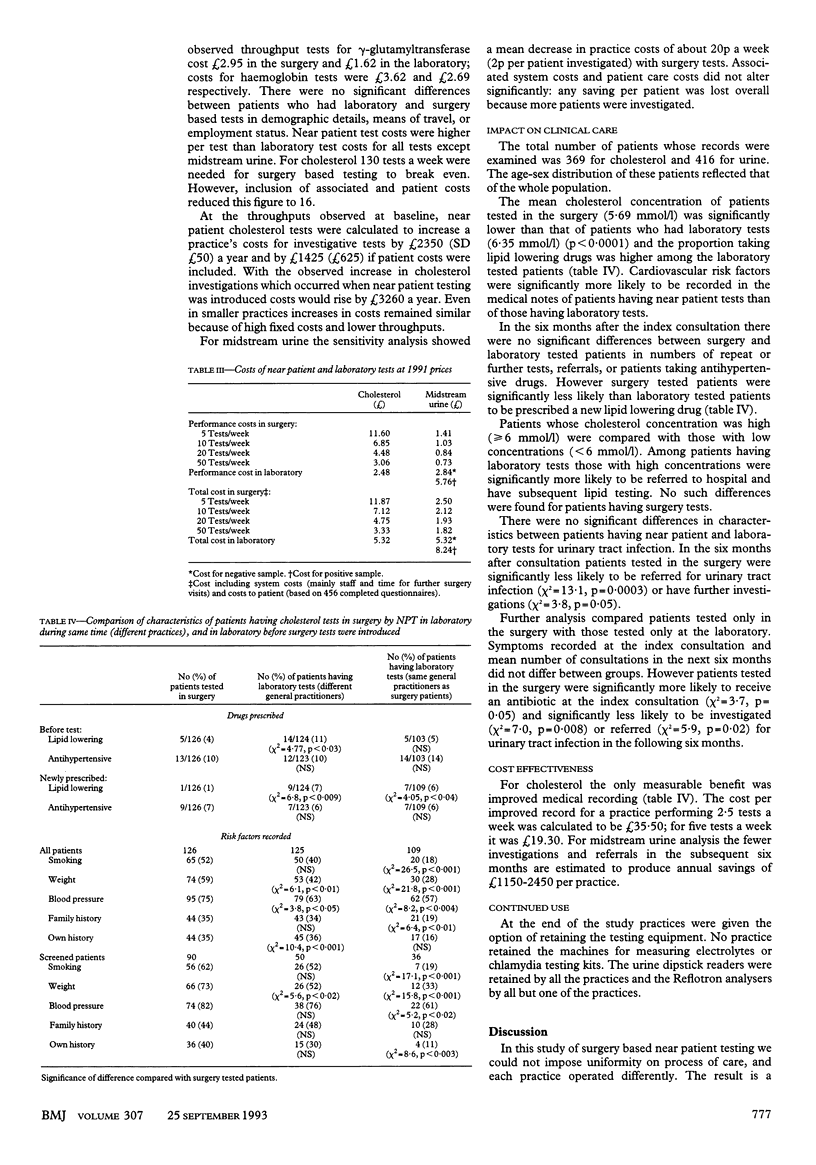Abstract
OBJECTIVE--To assess the clinical and economic impact of surgery based near patient testing in general practice for six commonly used biochemical and bacteriological tests. DESIGN--After four months' monitoring, equipment for two bacteriological and four biochemical tests was introduced without cost into 12 practices using a crossover design. Structured request forms were used to monitor laboratory investigations. SETTING--12 general practices in west midlands and south west Thames with list sizes above 9000. MAIN OUTCOME MEASURES--Investigation rates per 1000 consultations. Changes from baseline rates. Reasons for requesting investigations and provisional diagnoses. Cost per test and sensitivity of costs to rate of use. RESULTS--Investigation rates for the six tests rose by 16.5% (from 78.6/1000 consultations to 91.6/1000) when equipment was available in the surgery and reverted to baseline rates when it was withdrawn. The average weekly number of tests when equipment was available ranged from 0.5 to 10.5 (mean 9.0). Cholesterol tests were used as an addition to laboratory testing, usually for screening. Midstream urine analysis was often done in the surgery instead of in the laboratory, although 30% of samples were tested by both methods. Doctors' reasons for investigation and conditions tested were largely unaffected by availability of surgery tests. Costs for surgery tests were higher for all tests except midstream urine. CONCLUSIONS--Availability of surgery based testing increased the number of tests performed. It was cost effective only for midstream urine analysis.
Full text
PDF



Selected References
These references are in PubMed. This may not be the complete list of references from this article.
- Guyatt G., Drummond M., Feeny D., Tugwell P., Stoddart G., Haynes R. B., Bennett K., Labelle R. Guidelines for the clinical and economic evaluation of health care technologies. Soc Sci Med. 1986;22(4):393–408. doi: 10.1016/0277-9536(86)90046-8. [DOI] [PubMed] [Google Scholar]
- Hartley R. M., Charlton J. R., Harris C. M., Jarman B. Influence of patient characteristics on test ordering in general practice. Br Med J (Clin Res Ed) 1984 Sep 22;289(6447):735–738. doi: 10.1136/bmj.289.6447.735. [DOI] [PMC free article] [PubMed] [Google Scholar]
- Hilton S. Near patient testing in general practice: a review. Br J Gen Pract. 1990 Jan;40(330):32–36. [PMC free article] [PubMed] [Google Scholar]
- Hobbs F. D., Broughton P. M., Kenkre J. E., Thorpe G. H., Batki A. Comparison of the use of four desktop analysers in six urban general practices. Br J Gen Pract. 1992 Aug;42(361):317–321. [PMC free article] [PubMed] [Google Scholar]
- Jennett B. Health technology assessment. BMJ. 1992 Jul 11;305(6845):67–68. doi: 10.1136/bmj.305.6845.67. [DOI] [PMC free article] [PubMed] [Google Scholar]
- Mills K. A., Reilly P. M. Laboratory and radiological investigations in general practice. I-Type requested and rate of use. Br Med J (Clin Res Ed) 1983 Oct 8;287(6398):1033–1036. doi: 10.1136/bmj.287.6398.1033. [DOI] [PMC free article] [PubMed] [Google Scholar]
- Wilkin D., Metcalfe D. H., Hallam L., Cooke M., Hodgkin P. K. Area variations in the process of care in urban general practice. Br Med J (Clin Res Ed) 1984 Jul 28;289(6439):229–232. doi: 10.1136/bmj.289.6439.229. [DOI] [PMC free article] [PubMed] [Google Scholar]


